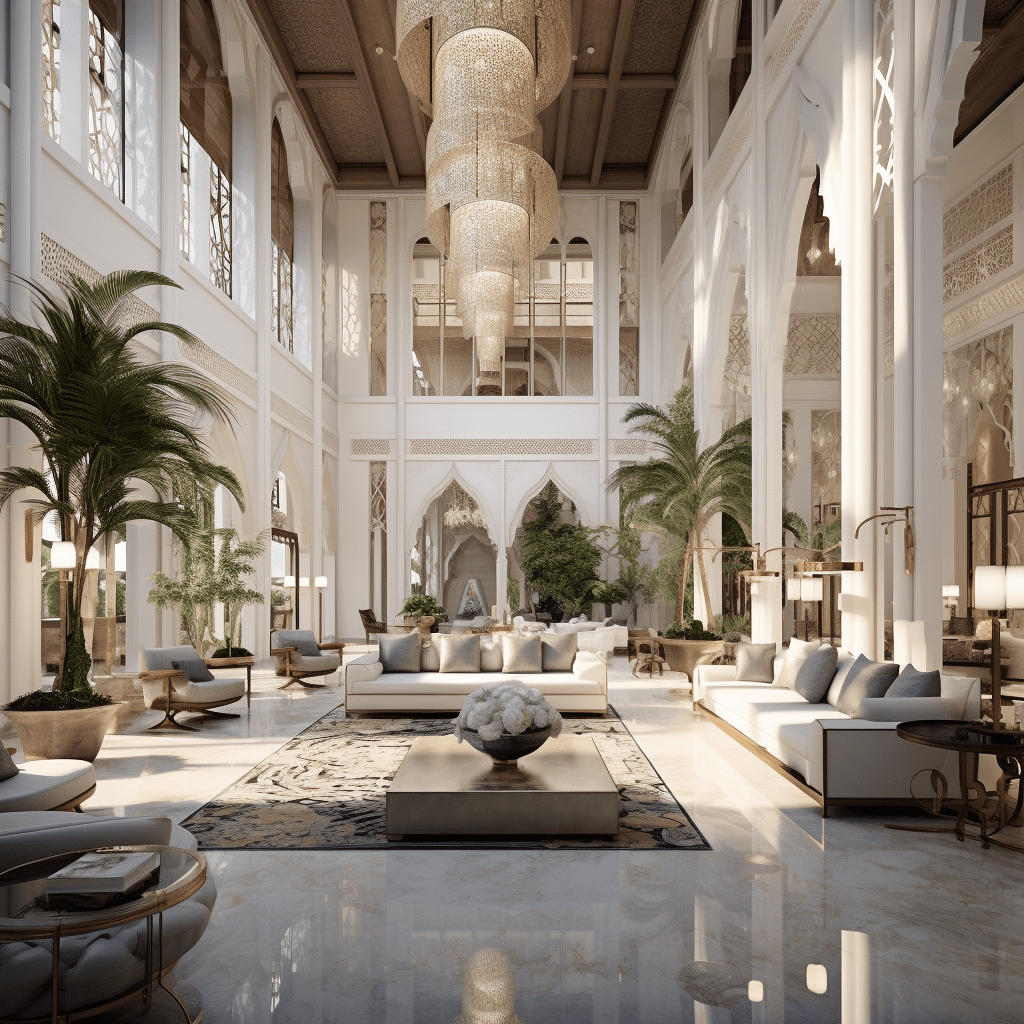Explore the Fusion of Traditional and Contemporary Elements, Luxurious Materials, and Unique Cultural Aesthetics
With their opulent lifestyles, thriving economies, and rich heritage, the countries of the GCC have become a hotbed for cutting-edge interior design trends. In the realm of interior design, the GCC region stands out for its seamless integration of traditional and contemporary elements, use of luxurious materials, and incorporation of unique cultural aesthetics. In this article, we will delve into the latest interior design trends prevalent in the GCC, offering insights into the dynamic and ever-evolving landscape of this vibrant region.
- Fusion of Traditional and Contemporary Elements:
One of the defining characteristics of interior design in the GCC is the seamless integration of traditional and contemporary elements. This design approach creates a harmonious balance between the region’s rich cultural heritage and the desire for modern, cutting-edge aesthetics. Traditional Arabian motifs, such as geometric patterns, arabesque designs, and calligraphy, are incorporated into contemporary spaces, adding a touch of authenticity and cultural significance. The blending of traditional and contemporary elements creates a visually striking ambiance that appeals to both local residents and international visitors.
- Luxurious Materials:
Luxury is at the core of interior design in the GCC, and the choice of materials plays a pivotal role in creating a lavish environment. From the grand residences of Dubai to the palatial hotels in Doha, opulent materials such as marble, gold, crystal, and high-quality textiles dominate the interior design landscape. Marble flooring, for instance, exudes elegance and sophistication, while gold accents in the form of furniture, fixtures, and accessories add a touch of glamour. These luxurious materials are meticulously selected to create an atmosphere of indulgence and refinement.
- Contemporary Islamic Design:
Islamic design has a profound influence on interior design in the GCC, and contemporary interpretations of Islamic aesthetics have gained significant popularity in recent years. These designs often feature intricate geometric patterns, calligraphy, and arabesque motifs, creating an atmosphere that is both modern and deeply rooted in Islamic heritage. Contemporary Islamic design celebrates the region’s cultural identity while embracing innovation and creativity.
- Minimalism with a Twist:
While opulence is a prevailing theme in the GCC, there is also a growing interest in minimalist design with a twist. Clean lines, open spaces, and a neutral color palette form the foundation of minimalist interiors, but they are infused with elements of luxury and indulgence. The minimalist approach allows key design elements, such as statement furniture or artwork, to take center stage, creating a sense of understated elegance. This fusion of minimalism and luxury appeals to those who seek a more restrained and sophisticated aesthetic.
- Integration of Technology:
The GCC countries are known for their technological advancements, and interior design in the region reflects this affinity for cutting-edge technology. Smart homes and automation systems are becoming increasingly prevalent, allowing residents to control various aspects of their living spaces through smartphones or voice commands. Lighting, temperature, security systems, and entertainment systems can all be seamlessly integrated to enhance convenience and comfort.
- Sustainable Design:
As sustainability becomes a global priority, the GCC region is also embracing environmentally conscious interior design practices. There is a growing emphasis on sustainable materials, energy-efficient systems, and eco-friendly designs. Incorporating elements such as natural lighting, green walls, and locally sourced materials not only reduces the environmental footprint but also creates a healthier and more eco-conscious living environment.
- Cultural Significance:
Each GCC country has its distinct cultural heritage, and interior design in the region often reflects these unique characteristics. Whether it’s the traditional architecture of Oman, the pearl diving history of Bahrain, or the Bedouin influences in Saudi Arabia, cultural elements are celebrated and
integrated into interior design concepts. This emphasis on cultural significance creates a sense of place and identity within the designed spaces.
The interior design trends in the GCC region represent a fascinating blend of traditional and contemporary elements, luxurious materials, and unique cultural aesthetics. The fusion of these elements creates an opulent and visually captivating environment that reflects the region’s rich heritage while embracing modernity. As the GCC continues to evolve and innovate, we can expect the interior design landscape to keep pushing boundaries and setting new trends in the realm of luxury and aesthetics.

